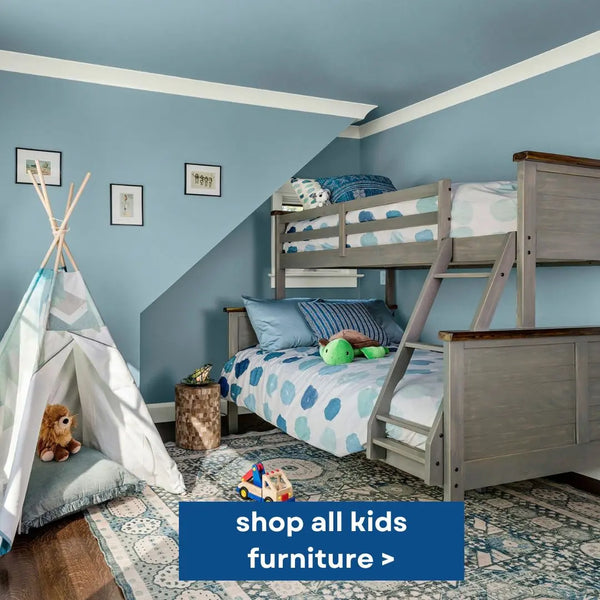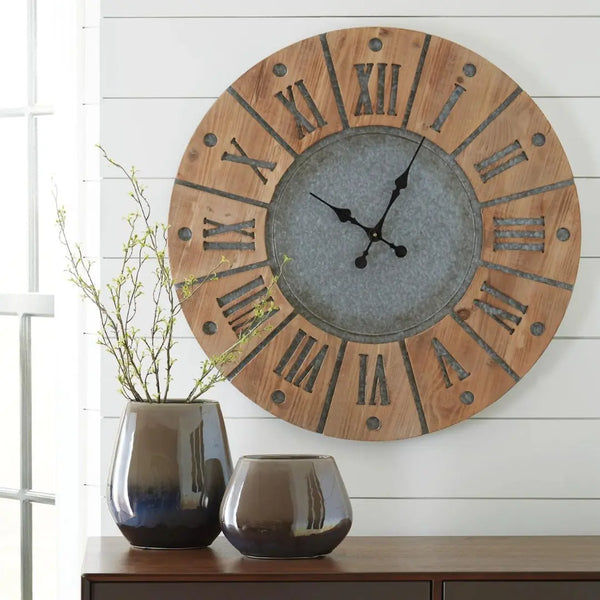Discover crucial tips and guidelines to ensure the safety of toddlers when using Murphy beds.
This comprehensive guide covers topics such as childproofing strategies, secure bed design considerations, installation safety, and safe sleeping options. Learn how to mitigate risks, implement safety standards, and establish safe bedtime routines to create a secure sleeping environment for your little ones.
Introduction

Your toddler's safety depends on a secure sleep environment. In order to ensure your child's safety, specific precautions must be taken when using Murphy beds. In this comprehensive guide, we will provide you with essential tips, guidelines, and safety standards about Murphy beds for toddlers. To ensure your child's safety and promote a peaceful bedtime routine, let's explore the key factors to consider.
In addition to their space-saving capabilities and versatility, Murphy beds are also known as wall beds or fold-down beds. These beds are especially useful in small living spaces or multipurpose rooms, allowing the bed to be conveniently tucked away when not in use. Despite Murphy beds' convenience and functionality, there are safety concerns associated with their use, especially when toddlers are present.
Parents and caregivers must be aware of the potential hazards and take proactive measures to create a safe sleeping environment for toddlers using Murphy beds. This guide aims to provide comprehensive information and practical guidelines to ensure the safety and well-being of young children when utilizing these space-saving beds.
In the following sections, we will explore childproofing strategies, secure bed design considerations, installation safety, compliance with safety standards, locking mechanisms, and the importance of establishing safe bedtime routines. By following these guidelines, you can minimize risks and promote a secure sleeping space for your little ones.
Understanding Murphy Beds for Toddlers

Murphy beds, also known as wall beds or fold-down beds, are innovative space-saving solutions that can be folded up against a wall or stored vertically within a cabinet when not in use. They are named after William L. Murphy, who invented the bed in the early 20th century. Murphy beds are designed to provide comfortable sleeping arrangements while maximizing floor space during the day.
Unlike traditional beds, Murphy beds offer the flexibility of being tucked away when not needed, making them particularly useful in smaller living spaces, such as apartments or studio apartments. They are commonly used in guest rooms, home offices, or multipurpose rooms, where the bed can be concealed to create a more functional and spacious environment.
Advantages of Murphy Beds for Toddlers
Space Efficiency: One of the primary advantages of Murphy beds for toddlers is their ability to optimize space. In smaller bedrooms or shared spaces, a Murphy bed can be folded up during the day, allowing for more room to play, study, or engage in other activities. It enables parents to make the most of limited living areas without compromising on the quality of sleep for their toddlers.
Versatility: Murphy beds offer versatility in room usage. They can easily transform a playroom or study area into a comfortable sleeping space for toddlers. This adaptability allows parents to create multifunctional rooms that can adapt to their changing needs over time.
Safety: While safety is a significant concern when it comes to Murphy beds and toddlers, proper precautions and adherence to safety guidelines can ensure a secure sleeping environment. Murphy beds designed for toddlers often come with safety features such as rounded edges, secure locking mechanisms, and sturdy construction. When used correctly and with appropriate childproofing measures, Murphy beds can provide a safe sleeping option for toddlers.
Enhanced Floor Space: By utilizing Murphy beds, parents can reclaim valuable floor space in their child's bedroom or play area. This additional space can be utilized for playtime, storage, or other essential activities, contributing to a more organized and functional living environment.
Transitional Bed: Murphy beds can serve as a transitional bed for toddlers who are ready to move from a crib to a regular bed. The compact design and ability to fold up the bed provide a sense of security and familiarity to the child during this transition phase.
Aesthetics: Murphy beds come in various styles and designs, allowing parents to choose an option that complements the overall aesthetic of the room. This ensures that the bed seamlessly blends with the existing decor while providing a practical sleeping solution for toddlers.
While Murphy beds offer several advantages for toddlers, it's important to prioritize safety and take necessary precautions to mitigate any potential risks. The following sections of this guide will delve into the essential safety considerations, precautions, and guidelines that should be followed to ensure the well-being of toddlers when using Murphy beds.
To ensure the safety of toddlers when using Murphy beds, it's crucial to understand their unique characteristics and benefits. This section provides an overview of Murphy beds, their functionality, and why they can be a practical choice for toddlers.
Ensuring Murphy Bed Safety: Childproofing Strategies
Murphy beds can be a convenient and space-saving option for toddlers, but it's important to be aware of potential hazards and take necessary precautions to ensure their safety. Some common hazards include entrapment risks, falling hazards, pinch points, weight restrictions, and sharp edges. To make Murphy beds safer for toddlers, implement childproofing measures such as securing locking mechanisms, installing guardrails, using childproof locks, conducting regular maintenance, creating a safe sleeping environment, and providing supervision. By being proactive and addressing these potential risks, parents can ensure a secure sleeping environment for their little ones.
Childproofing plays a pivotal role in preventing accidents and creating a safe environment for toddlers. This section focuses on identifying potential hazards associated with Murphy beds and provides practical childproofing strategies to mitigate risks effectively.
Designing Secure Toddler Beds: Installation and Safety Considerations

When it comes to Murphy beds for toddlers, ensuring their safety is of utmost importance. This can be achieved through the use of bed railings that prevent falls and accidents. Proper installation of the Murphy bed is essential to maintain stability and prevent any potential hazards. Additionally, choosing a bed with appropriate design features such as rounded corners and smooth edges adds an extra layer of safety. Understanding and adhering to the weight restrictions of the bed is crucial to maintain its structural integrity. By considering these factors, parents can provide a safe sleeping environment for their toddlers and have peace of mind.
Proper installation and secure design are key factors in ensuring the safety of toddler beds. This section discusses the importance of bed railings, installation safety guidelines, suitable design features, and weight restrictions to create a secure sleeping space for your child.
Compliance with Safety Standards: Essential for Murphy Beds

Understanding safety standards for Murphy beds is crucial when considering them for toddlers. Certifications from organizations like the CPSC or ASTM ensure that the beds meet specific safety requirements. Safety standards encompass factors such as materials, frame strength, and the presence of safety mechanisms. Mitigating toddler bed accidents involves following installation instructions, performing regular inspections, and addressing any potential hazards promptly. It's important to establish safe sleeping habits and supervise toddlers around Murphy beds. By adhering to safety standards and taking necessary precautions, parents can provide a secure environment for their toddlers while enjoying the benefits of Murphy beds.
Compliance with safety standards is crucial to guarantee the well-being of your child. This section explores the necessary safety standards for Murphy beds and discusses the importance of adhering to them. Additionally, it addresses common toddler bed accidents and provides valuable insights on how to mitigate risks effectively.
Exploring Murphy Bed Locking Mechanisms: Toddler Entrapment Risks

Murphy bed locking mechanisms play a crucial role in ensuring the safety of toddlers. By understanding how these mechanisms work and how to engage and disengage them properly, parents can prevent accidental folding of the bed. Assessing toddler entrapment risks is equally important, as curious children may attempt to climb or play around the bed, potentially getting trapped in gaps or openings. Regular inspections of the locking mechanism and overall bed condition can help identify any safety issues. By being proactive and taking appropriate safety measures, parents can create a secure environment for their toddlers around Murphy beds.
Murphy bed locking mechanisms are designed to secure the bed in its upright position when not in use. However, it's essential to be aware of potential toddler entrapment risks associated with these mechanisms. This section examines different types of locking mechanisms, assesses the associated risks, and provides safety measures to prevent accidents.
Establishing Safe Bedtime Routines: Key Considerations

Establishing safe bedtime routines is crucial for toddlers to promote healthy sleep habits and create a secure sleep environment. This involves following consistent rituals such as reading bedtime stories and taking warm baths to signal that it's time to wind down. Creating a safe sleep environment involves removing potential hazards like loose bedding and using a firm mattress with a fitted sheet. Promoting healthy sleep habits includes setting appropriate sleep schedules and providing a calm atmosphere with dim lights and soothing sounds. Safe bedtime routines contribute to toddlers' well-being by ensuring they have a peaceful sleep experience and supporting their overall development.
A consistent bedtime routine is crucial for ensuring a peaceful and safe sleep experience for toddlers. This section emphasizes the importance of establishing safe bedtime routines and provides practical tips for creating a secure sleep environment. It also highlights the significance of promoting healthy sleep habits to support your child's overall well-being.
Conclusion:
Safety should always be a top priority when it comes to choosing and using Murphy beds for toddlers. By following the guidelines and recommendations outlined in this comprehensive guide, you can significantly reduce the risks associated with Murphy beds and create a secure sleeping space for your child. From childproofing strategies and secure bed design considerations to compliance with safety standards and establishing safe bedtime routines, every aspect plays a crucial role in ensuring the well-being of your little one.
Remember, a well-informed and proactive approach is key to safeguarding your child's safety and providing them with a comfortable and secure sleeping environment. By implementing the knowledge gained from this guide, you can enjoy the convenience and functionality of Murphy beds while prioritizing your toddler's safety and peace of mind.
Written By: Christine Ilagan

Meet Christine Ilagan, a vibrant writer hailing from the University of Calgary. With a background rooted in academic excellence and a passion for the written word, Christine has seamlessly merged the worlds of research and storytelling. Drawing inspiration from her academic surroundings, she weaves narratives that are both enlightening and engaging. Whether it's an in-depth research piece or a light-hearted story, Christine's writings always resonate with authenticity. Dive in to experience a blend of knowledge and creativity, straight from the heart of Calgary's academic world.


 Best Sellers
Best Sellers
 Sale up to 40%
Sale up to 40%
 Living Room
Living Room
 Bedroom
Bedroom
 Dining Room
Dining Room
 Accents & Décor
Accents & Décor
 Office
Office
 Outdoor
Outdoor













